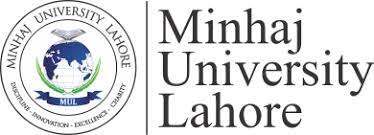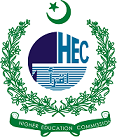In Search of a Sustainable Economy; Will Islamic Banking Help Nepal and Nepali Muslims?
DOI:
https://doi.org/10.58932/MULD0016Keywords:
Nepal, Islamic banking, Islamic finance, Microfinance, Religion, Sustainable economyAbstract
This article attempts to shed light on the issue of "why Nepal should adopt Islamic banking." The research presented in this conceptual and theoretical work is based on a thorough review of the literature. This paper will begin with a discussion of why the current banking system needs to be updated or changed, followed by an examination of its characteristics and how it might benefit Nepal's economy. The possibility of Islamic finance functioning as a microfinance tool by involving those who do not engage in economic activity will also be explored in this study. This article also argues for the need to set aside theological differences in order to embrace Islamic financing for the upliftment of underprivileged Muslim and non-Muslim minorities. Islamic finance has several advantages that cannot be dismissed based solely on the name or the notion that it is only for Muslims. To assist underprivileged populations in escaping poverty, Nepal's economy requires a banking system that would operate for welfare rather than profit. The only means of helping those who are below the poverty line to increase their wage rate are interest-free loans and microfinance tools.
References
Abdullah, A. A., Sidek, R., & Adnan, A. A. (2012). Perception of non-Muslims customers towards Islamic banks in Malaysia. International Journal of Business and Social Science, 3(11).
Sharofiddin, A., Idris, A. F. B., & Othman, A. H. A. (2018). Exploring the Challenges of Conventional Banking Practices and Prospects of Introducing an Islamic Banking in Tajikistan: Using Qualitative Aproach. International Journal of Islamic Economics and Finance (IJIEF), 1(1), 1-24.
Baber, H. (2017). A comparative study of Islamic housing finance models and issues. Qualitative Research in Financial Markets, 9(2), 168-180.
Bagehot, W. (1873). Lombard Street: A description of the money market. HS King&Company.
Beck, T., Levine, R., & Loayza, N. (2000). Finance and the Sources of Growth. Journal of financial economics, 58(1-2), 261-300.
Chakrabarti, R., & Sanyal, K. (2016). Microfinance and financial inclusion in India (pp. 209-256). Palgrave Macmillan UK.
Demirgüç-Kunt, A., Feyen, E., & Levine, R. (2013). The evolving importance of banks and securities markets. The World Bank Economic Review, 27(3), 476-490.
Sharofiddin, A., & Bin-Yousoff, W. S. (2013). The challenges of conventional banking practice and prospects of introducing an Islamic bank to Tajikistan. In 9th International Conference on Islamic Economics and Finance: Growth, Equity and Stability. An Islamic Perspective.
Furqani, H., & Mulyany, R. (2009). Islamic banking and economic growth: Empirical evidence from Malaysia. Journal of Economic Cooperation & Development, 30(2).
Honohan, P. (1997). Banking system failures in developing and transition countries: Diagnosis and predictions.
Kidder, L. (2012). Top Challenges Facing Financial Services in 2013. Bank Systems and Technology.
Mrak, M. (2000). Globalization: trends, challenges and opportunitess for countries in transition. UNIDO.
Mittal, A., & Garg, A. K. (2021). Bank stocks inform higher growth—A System GMM analysis of ten emerging markets in Asia. The Quarterly Review of Economics and Finance, 79, 210-220.
Mohieldin, M. (2012). Realizing the potential of Islamic finance. Economic Premise; No. 77.
Nyantakyi, E. B., Sy, M., & Kayizzi-Mugerwa, S. (2015). The banking system in Africa: Main facts and challenges. Africa Economic Brief, 6(5), 1-16.
Peng, Y. (2006). The Challenges of WTO entry to China’s banking industry. University of Cambridge. Cambridge.
Allen, F., Qian, J., Zhang, C., & Zhao, M. (2011). China’s Financial System: Opportunities and Challenges. Available at SSRN 1945259.
Representatives, U. H. (1986). Report of the Select Committee on Hunger. Washington: Government Printing Office.
Abdullah Saif Al Nasser, S., Datin, & Muhammed, J. (2013). Introduction to history of Islamic banking in Malaysia. Humanomics, 29(2), 80-87.
Sapkota, C. (2011). Nepalese banking crisis explained. Journal of Institute of chartered Accounts of Nepal, 13(4), 16-20.
Shrestha, P. M. (2020). Determinants of financial performance of Nepalese commercial banks: Evidence from panel data approach. NRB Economic review, 32(2), 45-59.
Singh, N. (2012). Bank Stability and its Determinants in the Nepalese Banking Industry.
Smolo, E., & Mirakhor, A. (2010). The global financial crisis and its implications for the Islamic financial industry. International Journal of Islamic and Middle Eastern Finance and Management, 3(4), 372-385.
Technavio. (2014, October 23). Technavio Blog.
Thurow, L. C. (1980). The Zero-Sum Society. New York: Basic Book.
A Resilient, P. P. N. C. (2020). Recovery and Future Growth Directions. World Bank: Kathmandu, Nepal.
Wagle, A. (2022). Regulatory crisis in Nepali banking. The Kathmandu Post.
Yunus, M. (1984). Group-based savings and credit for the rural poor. (No Title).









